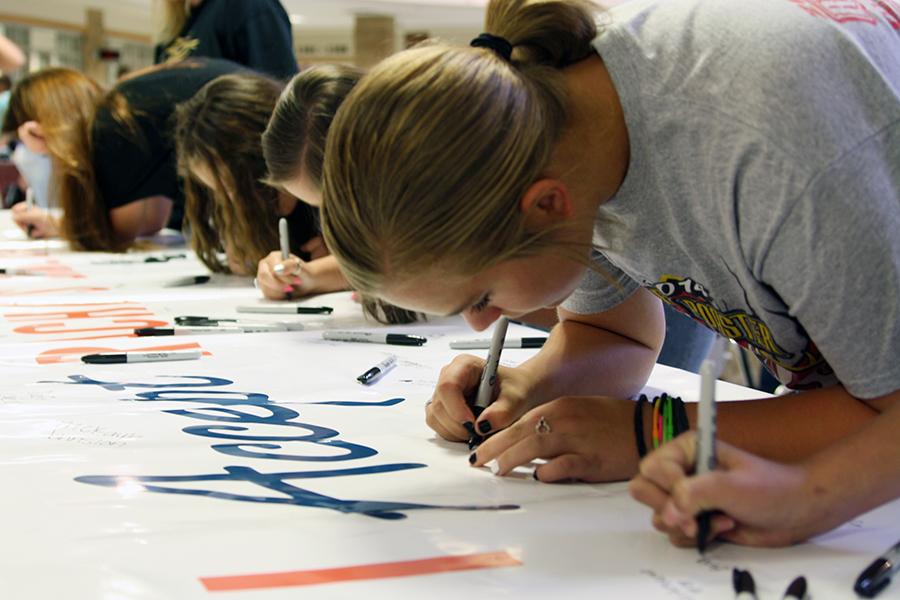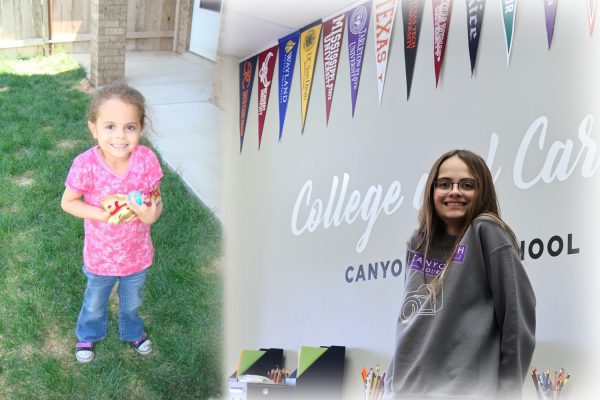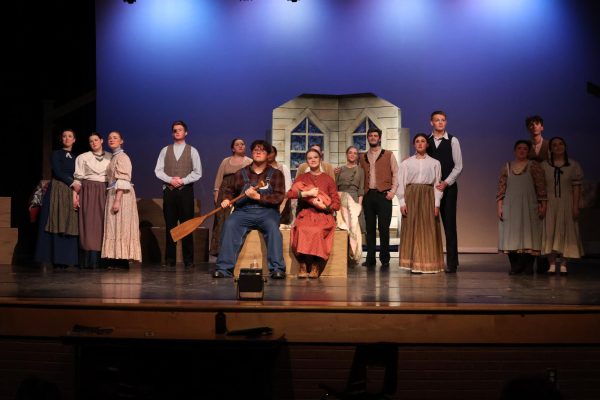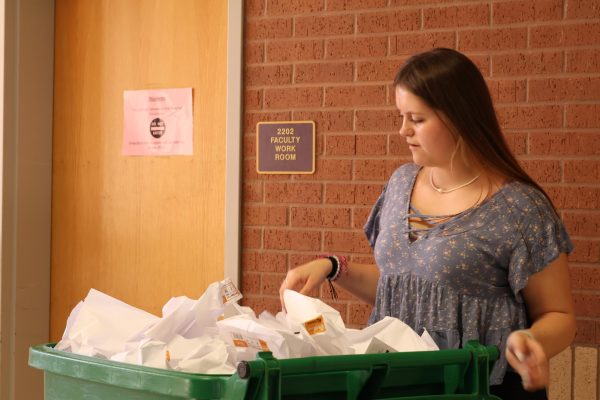‘Rachel’s Challenge’
Program encourages kindness, big dreams, positive action
Students sign the “I Accept Rachel’s Challenge” poster in the commons. By signing the poster, students pledge to carry out Rachel’s five challenges.
The room was silent, heads bowed and eyes closed, as students and teachers alike remembered the people they had lost, and the ones they loved. Their eyes slowly opened, a new light of kindness and inspiration glowing inside them.
“Rachel’s Challenge” is a national, non-profit organization created after the Columbine tragedy in 1999. The organization is based on writings found afterwards by Rachel Scott, the first student killed at Columbine. Rachel’s philosophy was to show kindness to everyone. Her family found an essay for her English class stuffed under her bed titled “My Ethics, My Codes of Life.” In the essay, she stated, “Compassion is the greatest form of love humans have to offer.” Cody Hodges heard her dad speak when he was in college and has since been working with ‘Rachel’s Challenge’ for nearly nine years.
“It had a profound and lasting impact on me,” Hodges said. “Athletics used to be my life, but hearing her dad speak changed that.”
There are five challenges, the first is to look for the best in people. Hodges met her brother Craig, who was present at the time of the shooting and witnessed one of the killers mock an African-American friend with racial slurs before killing the friend. Craig told Hodges racial prejudice needed to be eliminated.
“As people, we are really good about judging others,” Hodges said. “What if every single one of us looked for the best in others?”
The second challenge is to dream big. Hodges’s dream was to play football. In college, he wasn’t able to play often for his first four years, but did play his fifth year.
“For some of you, you don’t believe it (your dream), because other people tell you that you can’t,” Hodges said. “I’m so glad I didn’t listen to them.”
The third challenge is to choose positive influences. Amber, a new student at Columbine, had moved to the school after her mother’s death. Rachel was the first person to talk to her, and despite Amber’s insistence she was fine sitting at lunch by herself, Rachel and all of her friends sat with her, turning Amber’s worst day into her best.
“Friends are a huge influence on you,” Hodges said. “If we put junk in our lives, junk is going to come out. Every one of you is worth more than you think.”
The fourth challenge is to speak with kindness. Adam was a special education student at Columbine. He was being bullied in a hallway when Rachel put herself in between him and the bully. He was planning on taking his life that night. He changed his mind because he saw the good in someone else.
“We have no idea what other people are going through,” Hodges said. “Words can hurt or heal. People don’t change when you hate them. People do change when you show them kindness.”
The fifth challenge is to start your own chain reaction.
“It matters who you are going to be when you walk out, not when you walk in,” Hodges said. “Your school can always be better. Make your story positive, because it’s your story.”
Note:
Following the assembly, students nominated by teachers attended training for “Friends of Rachel” club leadership. Those students who choose to move forward with the FOR club will continue to meet with other students throughout the year. Students who wish to join FOR can listen for meeting announcements or contact Ms. Ray for details.

Hola! My name is Avery Cummings, and I am the Co-Editor-in-Chief this year. This is my third year on our amazing staff. In what little free time I have, I play the guitar and piano, and play with my dogs (who do not like each other). I love lipstick and...






